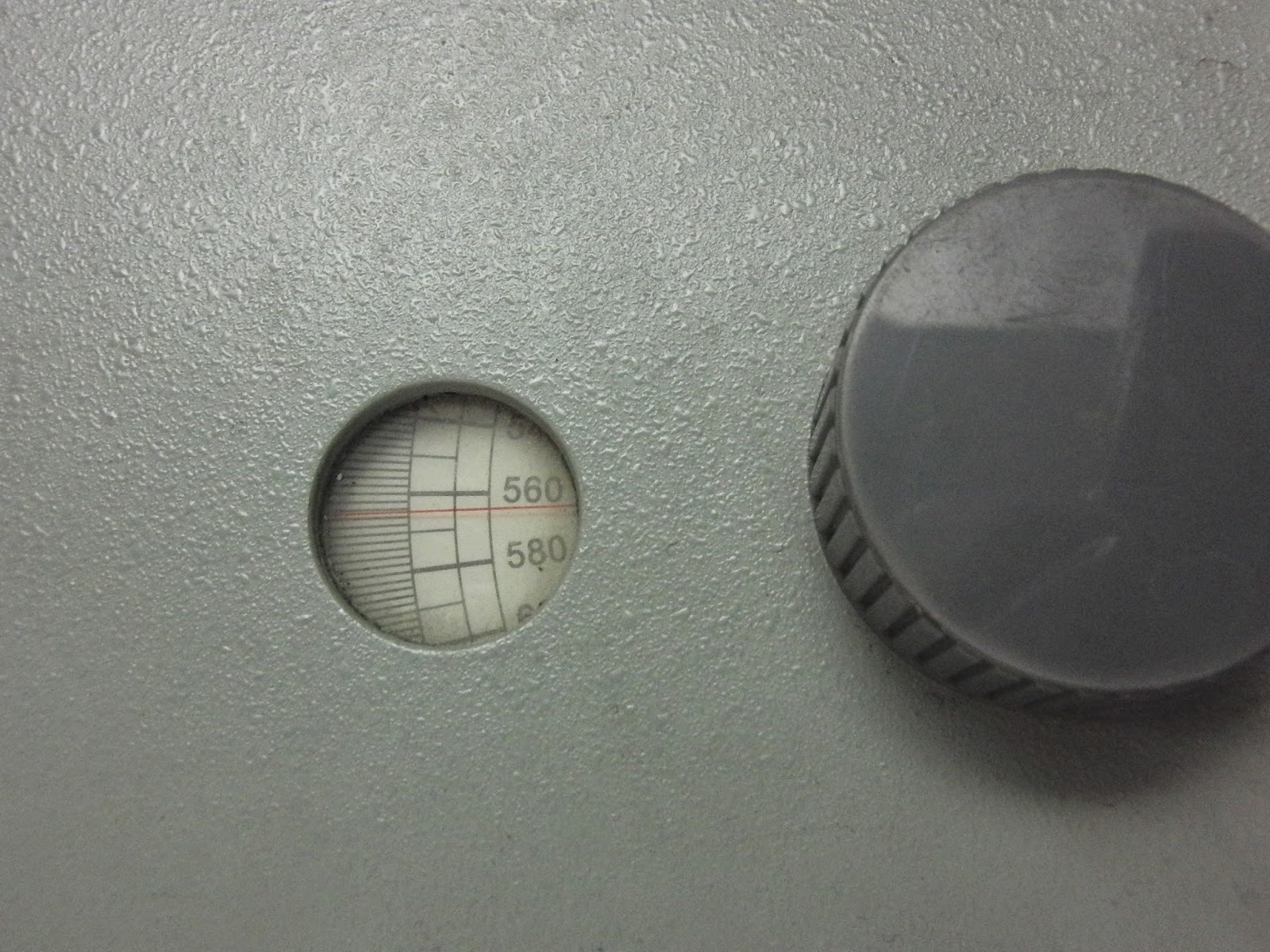1.
To determine the order of the
reaction of iodine-acetone.
2.
To determine the rate constant
at an assigned temperature
Principles
Acid catalyzed iodination of acetone is a
complex reaction. The rate law for overall reaction cannot be determined from
the balanced equation for the reaction but from experiments.
When an aqueous iodine solution is
reacted with acetone in the prescence of an acid, the yellow color slowly fades
as the iodine, I2, is consumed. The products of the reaction are
iodoacetone and hydrogen iodide. Hydrogen ion is a catalyst for this reaction. The
mechanism of the reaction is as follow:
Hydrogen ion participate in the reaction
as a catalyst in step on and step two and also be produced as a product in step
three. This kind of reaction is called an autocatalysis reaction. The rate equation
can be represented as follow:
The
reaction progress can be tracked by the determination of the concentration of
iodine and triiodide ion.
For
the reaction, the K- =700 and the absorbance of the solution can
be represented as follow:
A = A(I3-)+A(I2) = ε(I3-)L[I3-]
+ε(I2)L[I2]
When we set the wavelength of the light source of the
spectrometer at 565nm,the molar absorbance of I2 and
I3- is equal: ε(I3-) = ε(I2):
Absorbance =
ε(I3-)L[I3- + I2]
Since the concentration of acetone and
hydrochloric acid is much larger than the concentration of iodine/triiodide ion
so we can assume the concentration of acetone and acid as a constant at the beginning
of the reaction:
r = k[A]α[I3-]β[H+]δ = k[A]α[H+]δ
= constant
Finally, we can figure out the reaction
order and the activation energy of the reaction from Arrhenius equation:
Chemicals
1.
Iodine/KI solution (standardized):
0.02134M
2.
Acetone aqueous: 3.3738M
3.
Hydrochloric acid: 1.436M
4.
Distilled water
Apparatus
1.
Computer
2.
722S Spectrometer
3.
Cuvette
4.
Thermostatic water bath
5.
Pipette
6.
Dropper
7.
Washing bottle
Procedure
1.
Calibration the spectrometer
with distilled water before use.
2.
Turn on the thermostatic water
bath and set the temperature at 25℃.
Put the vessels with distilled water,
acetone aqueous, hydrochloric acid, iodine solution in the water bath for at
least 10 minutes.
3.
Measurement the εL value of iodine solution:
Turn on the 722S
spectrometer and warm it up for at least 10 minutes. Put the cuvette with d.d.
water into the spectrometer as a blank. Pour 25.00mL iodine solution into a 25mL volumetric flask and
dilute to the mark line with distilled water. Rinse the cuvette with the
solution for twice, and add the solution to the two-third full of the cuvette,
and determine the absorbance with the spectrometer.
4. Mix the reactants in a volumetric
flask as follow and dilute to the mark line then put into the spectrometer:
|
Sample
|
Iodine
solution (mL)
|
Acetone
aqueous (mL)
|
Hydrochloric
acid(mL)
|
|
1
|
5.00
|
5.00
|
5.00
|
|
2
|
5.00
|
2.50
|
5.00
|
|
3
|
5.00
|
5.00
|
2.50
|
|
4
|
7.50
|
5.00
|
5.00
|
|
5
|
7.50
|
5.00
|
5.00
|
Experimental Record
Table
1. Concentration of Reagents
|
Reagent
|
Concentration
|
|
Iodine/KI solution
|
0.02134 M
|
|
Acetone aqueous
|
3.3738 M
|
|
Hydrochloric acid
|
1.436 M
|
Table
2. The εL value
|
The εL value of the diluted iodine solution (λ=565nm)
|
|
0.3636
|

Data Process
First, do linear fitting for each diagram.
Take 30~300s for sample 1.
Take 30~300s for sample 2.
Take 30~300s for sample 3.
Take 30~300s for sample 4.
Take 30~150s for sample 5.
Second, figure out
the absorbance constant of iodine solution by the equation as follow:
Abs. x constant = Concentration
=> Abs.=0.3636, concentration = (0.02134*2.5/25)=0.002134M
=> constant= 5.869x10-3.
Third, multiply the
constant with each slopes which we get from the figure above and the rates of
reactions are as follow:
Table 3. Rate of
Reaction
|
Sample
|
rate
|
|
1
|
-4.4796x10-6
|
|
2
|
-2.1737 x10-6
|
|
3
|
-2.4358 x10-6
|
|
4
|
-4.3071 x10-6
|
|
5
|
-9.1560 x10-6
|
The reaction orders can be found by the calculations as follow:
=> β= 1.0420
=> δ= 0.8781
=> α= -0.0953
The rate equation can be represented as follow:
Then the reaction constant k can also be found:
Table 4. Reaction constant k
|
Sample
|
k
|
|
1
|
1.199X10-5
|
|
2
|
1.199X10-5
|
|
3
|
1.199X10-5
|
|
4
|
1.199X10-5
|
|
5
|
2.549X10-5
|
Finally the activation energy can be fiqure out from
Arrhenius equation:
References
[1] 傅献彩, 沈文霞, 姚天扬. 物理化学, 上册欧4 版. 北京:高等教育出版社, 1990:144.
[2] 清华大学化学系物理化学实验编写组. 物理化学实验. 北京:清华大学出版社, 1991.
[3] Robert C. Wcast Handbook of Chemistry and
Physics. Physics. 58th ed. Ohio: CRC Press, 1977.
[4] 朱文涛. 物理化学. 北京:清华大学出版社,1995.



























There is a permanent cure for HSV1&2 and Dr. easbnam herbal medicine is the perfect cure for herpes and I have used it and I was cured from HSV 2.The cure works perfectly with no side effects. Please I urge you to contact Dr. easbnam now through his email;dreasbnamrootandherbal1@gmail.com or what'sap +2348106600701 and he is capable of curing HIV/AIDS, HERPES, HPV, HSV1&2, COLD SORE, CANCER ,DIABETES
ReplyDelete